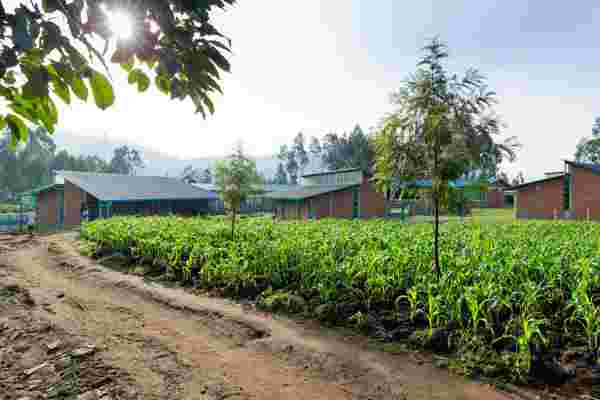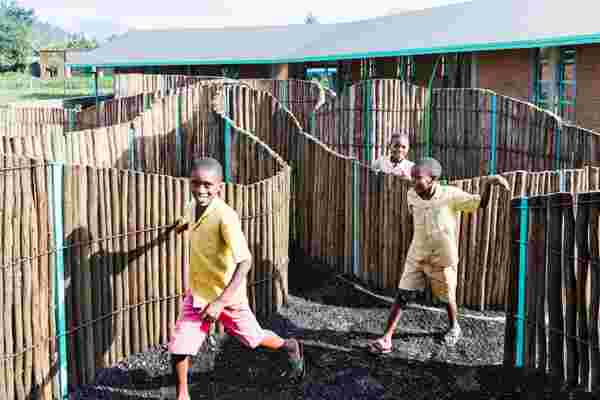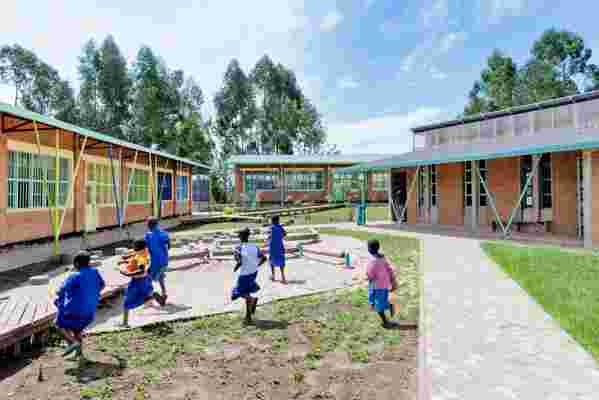Rwanda is trying to put its history of war and genocide behind it. Landlocked and without substantial natural resources, the country is investing in its people, turning to education as a force for change. Recent reforms have included raising the standards for advancing from primary to secondary school. That’s a good thing. But it has increased the number of older primary-school students, creating social tensions as well as a predictable shortage of classrooms.
Enter MASS Design Group , a nonprofit architecture firm based in Boston. Founded in 2008 by Michael Murphy and Alan Ricks, MASS is known for devising a striking hospital in northern Rwanda and a serene cholera clinic in Haiti, among other philanthropically and aesthetically ambitious projects.

Classrooms were positioned to minimize direct sunlight, helping keep them cool.
One of the group’s most recent successes came after it was tapped by the San Francisco–based education nonprofit M² Foundation to enlarge and renovate a typical primary school in the Musanze district of Rwanda. Called Mubuga, that institution was housed in a long, rectangular structure set at the edge of its site. Classrooms were situated without regard to the path of the sun, making them so hot as to be unusable at times, according to Murphy. Outside, a large dirt field served multiple purposes, none of them optimally. The MASS team not only repaired the existing structure but also added classrooms, positioning them to minimize direct sunlight while creating a series of small courtyards and outdoor play areas. These spaces can simultaneously accommodate separate groups—boys, girls, young kids, older kids—and also serve specific functions. One contains a maze, another a volleyball court. Some are just for sitting. Says the project’s lead designer, Patricia Gruits, “Seeing how many children are enjoying the equipment that was created for them is an overwhelming and joyous experience.”

Students play in the timber maze that MASS Design Group devised for one of the school’s many outdoor spaces.
The buildings themselves are handsome and practical, with walls of locally made brick and ceilings of thatched reed that are excellent for acoustics. All told, the school, which serves nearly 900 students, cost about $300,000 to complete. MASS hopes to build many more such facilities. Before and after the annex opened last year, the firm gathered data on the school’s performance. According to Murphy, interviews with students, parents, teachers, and community members suggest that attentiveness and attendance have improved as a result of the design. Recently MASS pledged to begin replicating the prototype throughout Musanze. If that collaboration goes well, other Rwandan districts might follow. “We’ve shown how you can make things better,” Murphy says. “We don’t want it to be a one-off.”

Pops of color enliven the brick structures.
